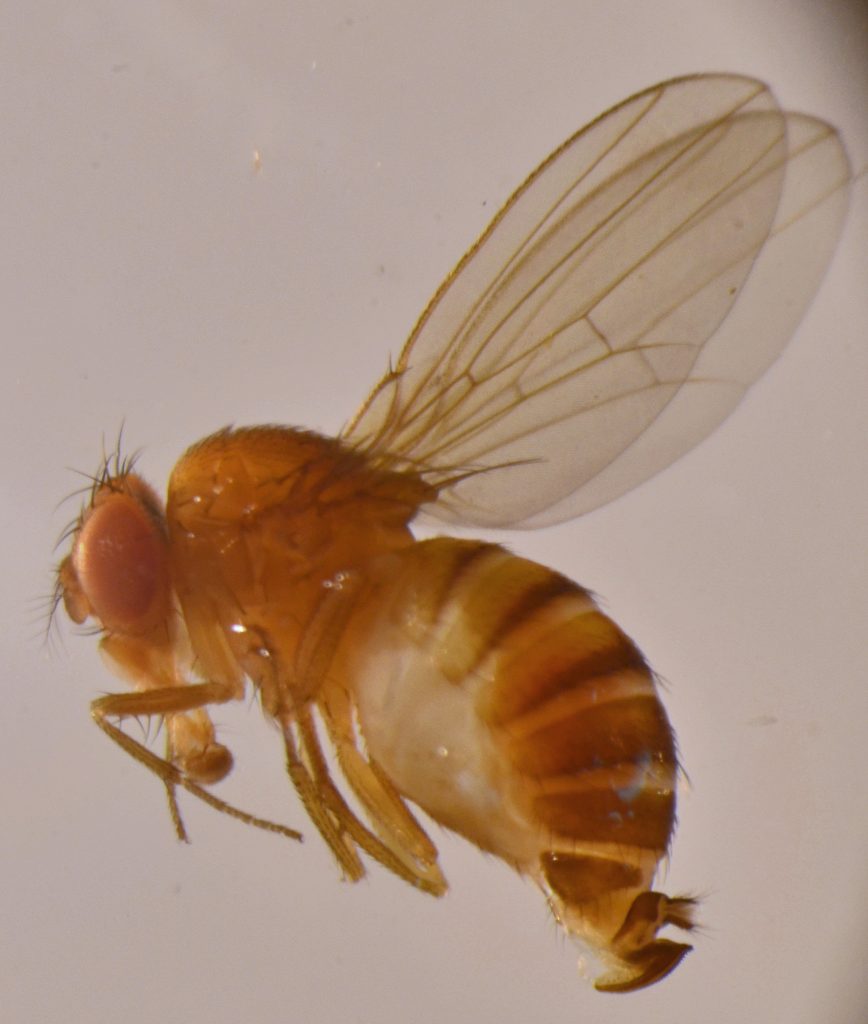Harvest Schedule and Sanitation for Managing Spotted Wing Drosophila
Spotted wing drosophila (SWD) has now been detected in Wisconsin and growers are strongly advised to monitor for the presence of SWD on their farm and implement management practices as soon as the first adult flies are trapped or the first larvae inside fruit are detected in susceptible crops. Numbers have been ramping up in our traps (~20 adults/trap) in Dane county and the populations are building up to levels that may become damaging for growers. Make sure you start monitoring for SWD on your farm, especially if you have a history of SWD populations on your farm.
Besides chemical controls that growers may apply to reduce SWD populations in their crops, we have discussed other management strategies in the past, including exclusion netting, planting varieties that escape SWD populations because of the timing, sanitation, and prompt harvest. We addressed two of these topics in previous issues of this newsletter last summer. You may refer back to them by clicking on these links: Exclusion barriers and varietal susceptibility. Here I will discuss harvest schedule and sanitation as recent research has addressed both of these topics.

Typically, fruit tends to be harvested a few times a week. Recent research addressed harvest frequency by harvesting raspberry fruit every day, every other day and every 3 days to assess the impact on SWD egg and larval infestation. Ripe fruit were picked based on the different schedules and the study was conducted over two years. The average daily yield was found to be highest with 2 day harvest intervals followed by 3 days and then 1 day intervals. The fruits were then placed into a salt water test and screened thoroughly for eggs and all larval stages. Fewer eggs and larvae were found in fruit harvested every 1 or 2 days compared to fruit harvested every 3 days. Increasing harvest frequency to decrease the number of larvae, especially the bigger final (3rd) instars, is particularly important for marketability. Eggs and larvae were lower but still present on a 1 day harvest interval; thus, relying entirely on prompt harvest for reducing SWD populations is not advised. Instead prompt harvest should be combined with short pre-harvest interval insecticides. In addition, rapid post-harvest cooling of the fruit will reduce fruit damage and kill or stop development of the eggs and larvae.
Sanitation is another important aspect of SWD management. Flies continue to emerge from infested culled fruit and thus we recommend to dispose of infested fruit by burial, freezing, or bagging. Recent research addressed the impact of bagging fruit on SWD survival. SWD-infested fruits were placed in clear, white or black plastic bags that were placed in an open sunny field. Bagging the fruit for 32 hours killed 99% of the larvae inside the bags, regardless of the color of the plastic used. Bagging the fruit for shorter periods of time (1hr, 4hrs) did not reduce adult emergence.
Harvesting fruit every 2 days and bagging culled fruits for 32 hours will significantly reduce SWD populations and should be integrated as much as possible into an IPM plan to combat SWD.
Happy growing season!
Reference: Leach et al. 2017. Rapid harvest schedules and fruit removal as non-chemical approaches for managing spotted wing Drosophila. Journal of Pest Science. DOI: 10.1007/s10340-017-0873-9
This article was posted in Insects and tagged SWD.
